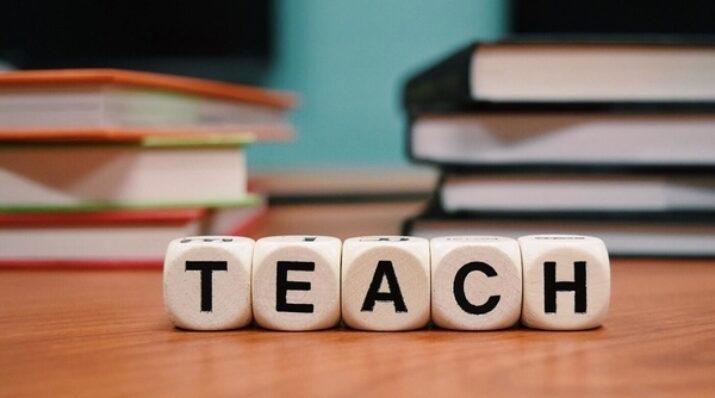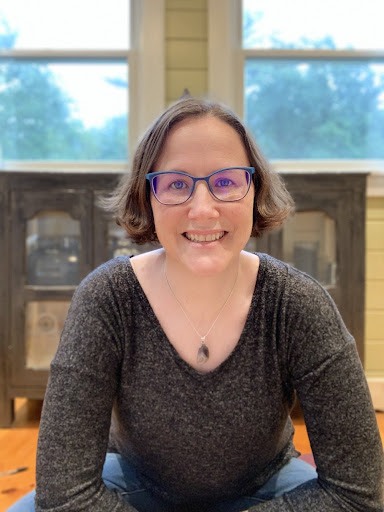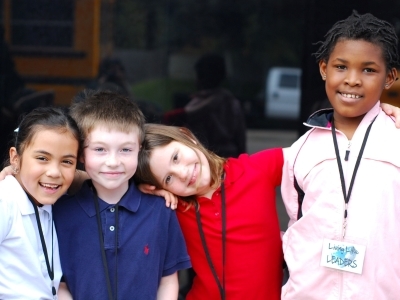7 Small Changes to Support Your Mental Health This School Year
Topics

When educators design and create new schools, and live next gen learning themselves, they take the lead in growing next gen learning across the nation. Other educators don’t simply follow and adopt; next gen learning depends on personal and community agency—the will to own the change, fueled by the desire to learn from and with others. Networks and policy play important roles in enabling grassroots approaches to change.
Teachers can sustain their mental health and well-being throughout the school year with these seven small but foundational research-based strategies.
It’s almost time to head back to school. How did that happen?! Where did the time go?! I know we ask that question every year, but seriously, summer sometimes feels like an epic time warp! Am I right?! Nevertheless, I hope you thoroughly enjoyed the summer not only with your family and friends but also with yourself.
As we start the school year, you may feel a bit of excitement and perhaps some trepidation stirring inside of you about what the year is going to bring. You’re not alone. That’s totally natural, especially given the unpredictability we’ve all experienced over the past few years. We’ve endured a lot and continue to do so, and healing and supporting ourselves takes time and continuous intentional effort. Healing prolonged stress and trauma does not happen overnight; it’s an ongoing journey, not a final destination.
Before we start back to school, what if we laid some foundational supports for ourselves? I know, I know … oftentimes, once the school year starts, our best-laid plans derail quickly! But what if we start small, using seven strategies that can be foundational for sustaining your mental health and well-being throughout this school year and beyond? And—BONUS—you might already be doing some of these! Here they are in no particular order.
1. Clear Your Plate
We as educators, as you know, have a lot on our plates all of the time. What if we take some time before heading back to school to intentionally look at what we have on our plates? Is there anything you can let go of, either personal or professional? Is there anything that you can ask your school leader to take off your plate? Is there anything that’s not absolutely necessary? If so, take it off your plate to make room for things that will help you sustain your mental health and well-being. And make this intentional plate-clearing process a practice every month (if not more often) throughout the year. Look at it as a time to reflect and reevaluate your plate to see if there’s anything that can be cleared.
2. Play Every Day
Back in 2019, collaborative research from The Genius of Play and Fundamentally Children found that 75 percent of children were not getting enough play. If that’s the case, can you imagine the percentage of adults? According to Dr. Stuart Brown, founder of the National Institute for Play, “Play that is based on our inner needs and desires is the only path to finding lasting satisfaction in our relationships and professional work.”
There are many benefits of play: it boosts creativity and problem-solving abilities; reduces stress; builds resilience, improves relationships; nurtures community; and much more. Given all of the benefits, it’s important for us to bring play back into our lives. So how do you get started doing just that? The activities that we find fun are unique to each of us. The National Institute for Play encourages adults to:
- Identify what is playful for you. Everyone is different, so find what works for you!
- Develop lifelong play habits. Habits typically take 40 days to become routine in our lives, so try to incorporate play at least once a day for 40 days to see what sticks!
- Recognize how you feel when there’s not enough play. Practicing intentional check-ins to see how you’re feeling is important, and doing specific check-ins on how you feel when you play and not can help you see the benefits of play in your everyday lives.
- Model healthy play habits in your communities. Establishing a sense of play and modeling it for others, including the other adults and little ones in your professional and personal lives, can help make play an integral part of your day-to-day life.
3. Define and Establish Your Safe Spaces
According to trauma and somatic psychology research, to heal ourselves and support our well-being, we need to have a felt sense of safety. This means safety in mind, body, and all other critical aspects of our being and lives. As you begin the school year, think about these various elements of your safety and identify ways you can support yourself to feel safe. Just as our students need to Maslow before Bloom, so do we as adults. And safety, inside and outside of ourselves, is priority number one!
4. Build and Bolster Trusting Relationships
Once we have established a felt sense of safety, we can build and bolster relationships with others we trust. Trusting relationships provide us opportunities for co-regulation. Co-regulation is a way for your nervous system to work with another being’s (human, animal, plant, or otherwise) system to calm and ground. The more relationships we have that support co-regulation, the better.
5. Create and Cultivate Your Supportive Communities
Taking relationships one step further to create and cultivate a supportive community allows for more opportunities to support overall well-being. Each community or network you are part of provides specific support for each component of your well-being. Take some time to reflect on the communities you’re a part of and how they support you, as well as how you support them (giving back is just as important as getting support from others). Are there any communities that you think you’d like to add or even create to provide yourself better support?
6. Learn Something New
Stepping out of our comfort zone and learning something new can spark creative energy, which in turn provides us a chance to reclaim our power and voice, and heal. Each day, see if there’s something small you can learn that is novel to you to help light up your curiosity!
7. Explore and Engage in Short Restoration Activities
We as educators are busy a majority of the time. When possible, take short bits of time to downshift, to rest, to reset, and to restore your mind and body. Perhaps you can check out yoga nidra, restorative yoga, yin yoga, and guided meditations that take anywhere from five to 60 minutes. These restorative activities help to refresh yourself and cultivate renewed energy.
This is definitely not an exhaustive list, but I hope these and other small changes can help support you as you jump into this school year and many more years to come!
This article originally appeared on the Gale blog on July 28, 2023. Image at top by Wokandapix on Pixabay.




